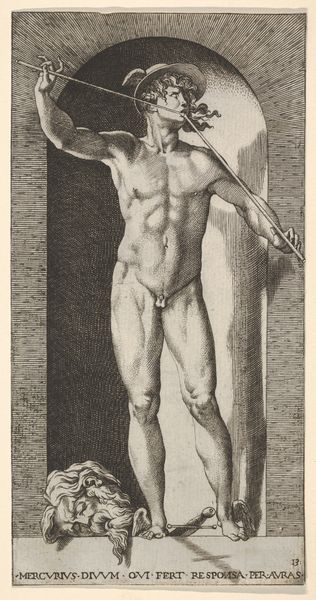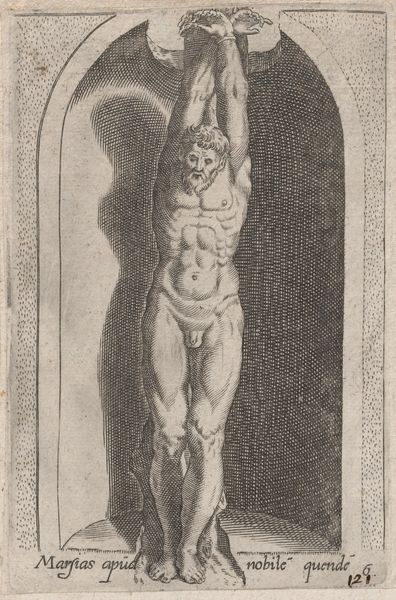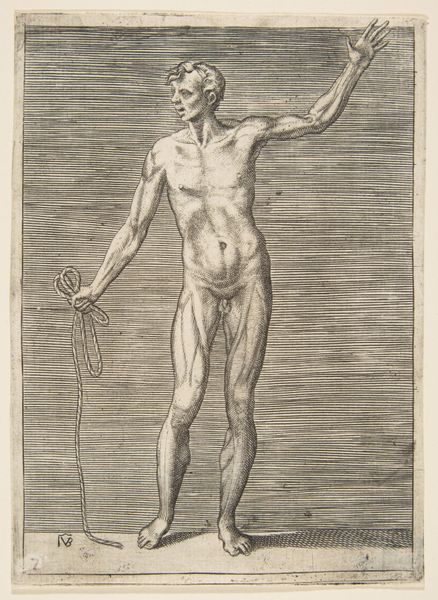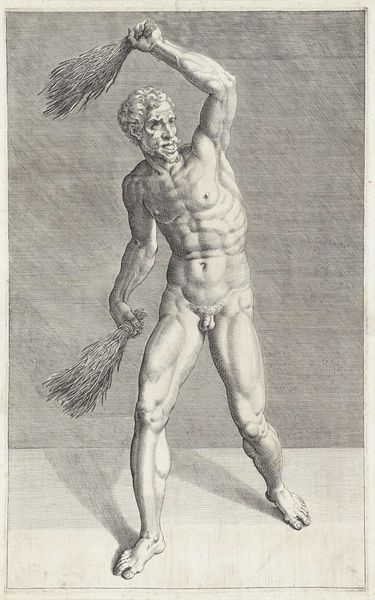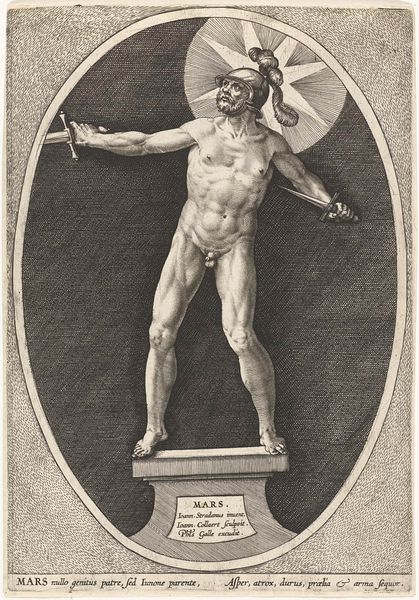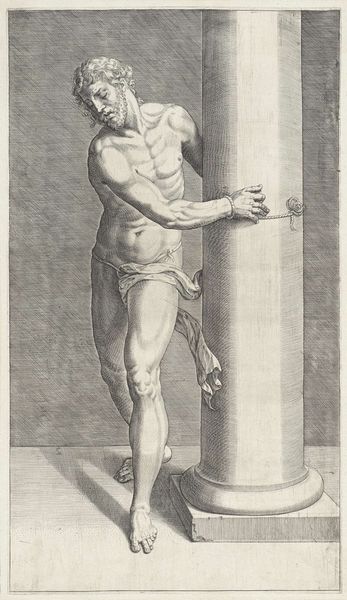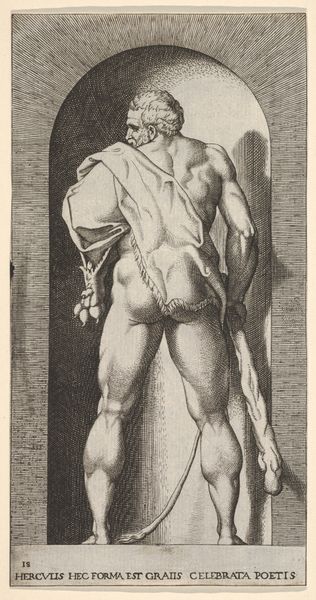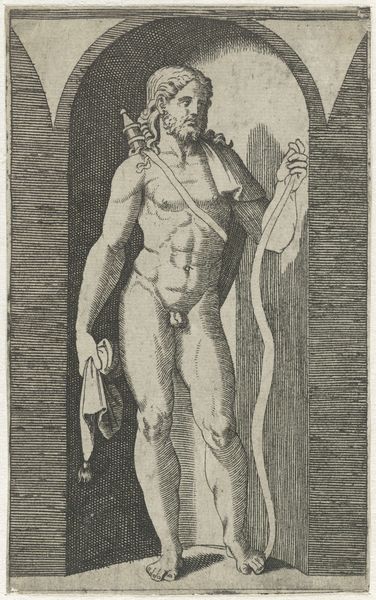
engraving
#
old engraving style
#
figuration
#
11_renaissance
#
history-painting
#
nude
#
engraving
Dimensions: height 212 mm, width 108 mm
Copyright: Rijks Museum: Open Domain
Curator: This engraving, housed here at the Rijksmuseum, is titled "Mercurius met het hoofd van Argus" and was created around 1530 by Jacob Binck. What strikes you about it? Editor: It's arresting, even stark. The figure of Mercury dominates, emerging almost aggressively from that shadowed niche, rendered with remarkable detail given it's an engraving. The execution of the musculature is intriguing. Curator: Absolutely. The work itself is an engraving, so we must consider Binck's skill and labor in producing multiple copies. Engravings in the Renaissance facilitated the spread of knowledge and artistic styles. What was the purpose of these engravings? What social role did they serve? Who was consuming them and under what conditions? Editor: Contextually, Binck worked as a court painter and printmaker. These mythological scenes offered rulers a way to visually connect with classical virtues and power. Mercury's victory over Argus, and thus the liberation of Io, could have resonated as a powerful symbol of sovereignty for the era's leaders. Curator: Exactly. Think about the materiality of the print itself. The paper, the ink, the metal plate that impressed the image—these were all commodities. Prints allowed mythological stories to become available beyond elite circles. How was access to images changing in the Renaissance, and how did Binck’s printmaking practices contribute to that broader shift in consumption and dissemination? Editor: The proliferation of these kinds of images shaped public perception and informed socio-political rhetoric. Consider, for instance, how the nudity and ideal proportions relate to contemporary concepts of beauty and virtue promoted by those in power, reinforced by institutions. Curator: And there’s a complex interplay between art and craft. Binck’s skill transforms base metals and humble paper into carriers of complex ideological content. This really brings out the social relevance and function of visual media. Editor: The visuality of power is on full display! I appreciate understanding how engravings like this one weren't simply aesthetic objects but functioned actively within the complex socio-political networks of their time. Curator: Agreed. It’s fascinating to consider Binck’s Mercury both as a standalone object and as a component in a broader cultural system.
Comments
No comments
Be the first to comment and join the conversation on the ultimate creative platform.

